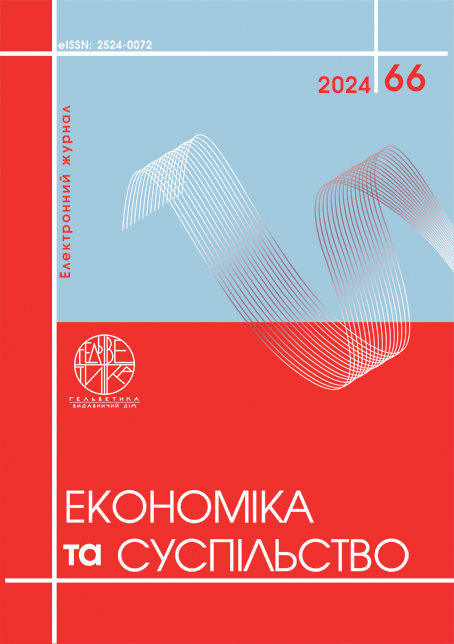TRADE CHARACTERISTICS OF PIG MEAT CORRECTED BY IRON COMPOUNDS
Abstract
The article is devoted to topical issues of today, where in a competitive market, product quality is the most important factor and the undisputed basis for the success of the manufacturer. One of the priority areas for increasing pork production in the current economic and economic conditions is the development, testing and use of new types of biologically active drugs (in particular, iron compounds) in animal feeding, which allow to increase the digestibility of nutrients in diets by fermenting hard-to-digest components of the diet. Until recently, compensation for iron deficiency in pigs' diets was carried out at the expense of inorganic compounds of different composition, which are often quite difficult to digest by the animal body. The comparative effect of different iron compounds on the commercial qualities of pig meat (caloric content and muscle eye area) is presented. The best data were obtained when the diet was supplemented with chelated iron compounds. Chelated compounds, which are added to the diet of animals to meet the need for trace elements, have a significant advantage over inorganic metal salts. They are practically non-toxic, sufficiently soluble in water, highly stable in a wide pH range, absorbed by soil and destroyed by microorganisms, retained in solution for a long time, and correlate well with other substances. In particular, the addition of iron to the diet in the form of methionates and lysinates increases the caloric content of meat relative to the control group (I, II, III) by 4.5, 8.8, and 9.9%, respectively. An increase in the area of the muscle cell compared to the control was also found in all experimental groups.
References
Бірта Г. О. Товарознавча характеристика продукції свинарства. Навч. посібник. Київ : Центр учбової літератури, 2011. 144 с.
Баньковська І. Б. Біологічна і харчова цінність м’яса свиней різних порід та вагових кондицій. Проблеми зооінженерії та ветеринарної медицини : зб. наук. праць ХДЗВА. Харків : РВВ ХДЗВА, 2016. Вип. 32. Ч. 1. С. 82–88.
ДСТУ 4718:2007. Свині для забою. Київ. 2008, 10 с.
ДСТУ 7158: 2010 «М'ясо. Свинина в тушах і півтушах».
Фоміна М. В., Дашковський О. О., Калин Б. М. Ефективність застосування заліза у формі хелатних сполук при годівлі тварин. Матеріали Всеукр. наук. інтер. конф. Полтава, 2014. С. 161–164.
Паска М. З. Фізіологічний стан та продуктивність бугайців за дії солей дефіцитних мікроелементів і їх хелатних комплексів з цистеїном : автореф. дис. на здобуття наук. ступеня канд. вет. наук : спец. 03.00.13 “Фізіологія людини і тварин”. Львів, 2004. 18 с.
Якість м’яса у свиней за використання у годівлі кормових добавок : Монографія / В. В. Бондаренко, В. А. Главатчук. Вінниця : РВВ ВНАУ, 2021. 174 с.
Šprysl M., Čítek J., Stupka R. [et al.] The significance of the effects influencing the reproductive performance in pigs. Research in pig breeding. 2012. Vol. 6(1). P. 54–58.
Паска М. З. Інноваційний розвиток гастрономічного туризму Львівщини в контексті формування ресторанних брендів. Індустрія туризму і гостинності в Центральній та Східній Європі. 2022. № 5. С. 98–103. DOI: https://doi.org/10.36477/tourismhospcee-5-12
Paska M., Korkuna O., Kulyk O. Current development trends of raw-smoked sausages in the context of gastronomic tourism. Trends in the development of international tourism in the current context of globalization : Collective scientific monograph. Opole, 2020. P. 152–158.
Birta G. O. (2011). Merchandising characteristics of pig production. Education manual. Kyiv: Center of educational literature, 144 p.
Bankovska I. B. (2016). Biological and nutritional value of pig meat of different breeds and weight conditions. Problems of zooengineering and veterinary medicine: collection of sciences. Proceedings of the KhDZVA Kharkiv: RVV KhDZVA. Iss. 32. Part 1. P. 82–88.
DSTU 4718:2007. Pigs for slaughter. Kyiv. 2008, 10 p.
DSTU 7158: 2010 "Meat. Pork in carcasses and half-carcasses".
Fomina M. V., Dashkovskyi O. O., Kalin B. M. (2014). Effectiveness of using iron in the form of chelated compounds in animal feeding. Materials Vseukr. Science inter. conf. Poltava. P. 161–164.
Paska M. Z. (2004). Fiziolohichnyy stan ta produktyvnistʹ buhaytsiv za diyi soley defitsytnykh mikroelementiv i yikh khelatnykh kompleksiv z tsysteyinom : avtoref. dys. na zdobuttya nauk. stupenya kand. vet. nauk : spets. 03.00.13 “Fiziolohiya lyudyny i tvaryn”. Lviv, 18 s.
Pig meat quality due to the use of feed additives in feeding: Monograph / V. V. Bondarenko, V. A. Glavatchuk. Vinnytsia: RVV VNAU, 2021. 174 p.
Šprysl M., Čítek J., Stupka R. [et al.] (2012). The significance of the effects influencing the reproductive performance in pigs. Research in pig breeding. Vol. 6(1), P. 54–58.
Paska M. Z. (2022). Innovatsiinyi rozvytok hastronomichnoho turyzmu Lvivshchyny v konteksti formuvannia restorannykh brendiv [Innovative development of gastronomic tourism in Lviv region in the context of restaurant brand formation]. Industriia turyzmu i hostynnosti v Tsentralnii ta Skhidnii Yevropi, no 5, pp. 98–103. DOI: https://doi.org/10.36477/tourismhospcee-5-12
Paska M., Korkuna O., Kulyk O. (2020). Current development trends of raw-smoked sausages in the context of gastronomic tourism [Current development trends of raw-smoked sausages in the context of gastronomic tourism]. Trends in the development of international tourism in the current context of globalization : Collective scientific monograph. Opole, pp. 152–158.

This work is licensed under a Creative Commons Attribution 4.0 International License.


